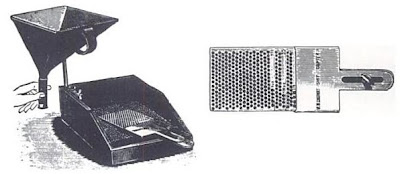The standard way to test the shotgun pattern is to take a square sheet of paper around 40-45 inches long on each side. The tester mounts this sheet of paper at a distance of 40 yards. The tester then loads the shotgun with a cartridge that has a known number of pellets and shoots at the target. After this, the shooter looks at the paper and draws a circle of 30 inches diameter around the area with the greatest concentration of pellets.
Then the tester counts the number of holes inside this 30 inch circle. Say there are 150 holes inside the circle and the tester knows that the cartridge had 200 pellets loaded. Therefore the tester can say that this shotgun shoots with a 75% pattern for this choke and cartridge load combination.
The tester repeats this test five or more times with a given cartridge load and computes the average to get the shotgun pattern. Obviously, the type of choke used, the number and size of the pellets in the cartridge and the material of the pellets all may have an effect on the pattern density, so the tester tries the same test out with different combinations to find out which of these produce the best patterns.
In order to keep the tests accurate, one needs to make sure that the cartridges used in this test have the same number of pellets or ball bearings each time. One way to do this is to weigh the pellets before loading them into the cartridge. The following table illustrates the average number of pellets per ounce of different standard pellet sizes for both lead and steel pellets:
Of course, this assumes that the pellets are all of the same shot size. Some people don't believe in weighing the pellets to get a count. Instead, what they do is use a simple counting device, such as the one shown below:
It consists of a flat trowel made of brass or steel, with a number of holes drilled into it. There is a sliding cover on the handle that can be used to vary the number of holes exposed on the face of the trowel. The tester pushes the trowel into a pile of pellets or bearings and slowly withdraws it. Pellets will stick to the holes and those that are not in any holes can easily be separated. Any misshapen or undersized pellets are also easily visible, so they can be removed as well. The tester can thus easily load the exact same number of pellets into multiple cartridges.













No comments:
Post a Comment